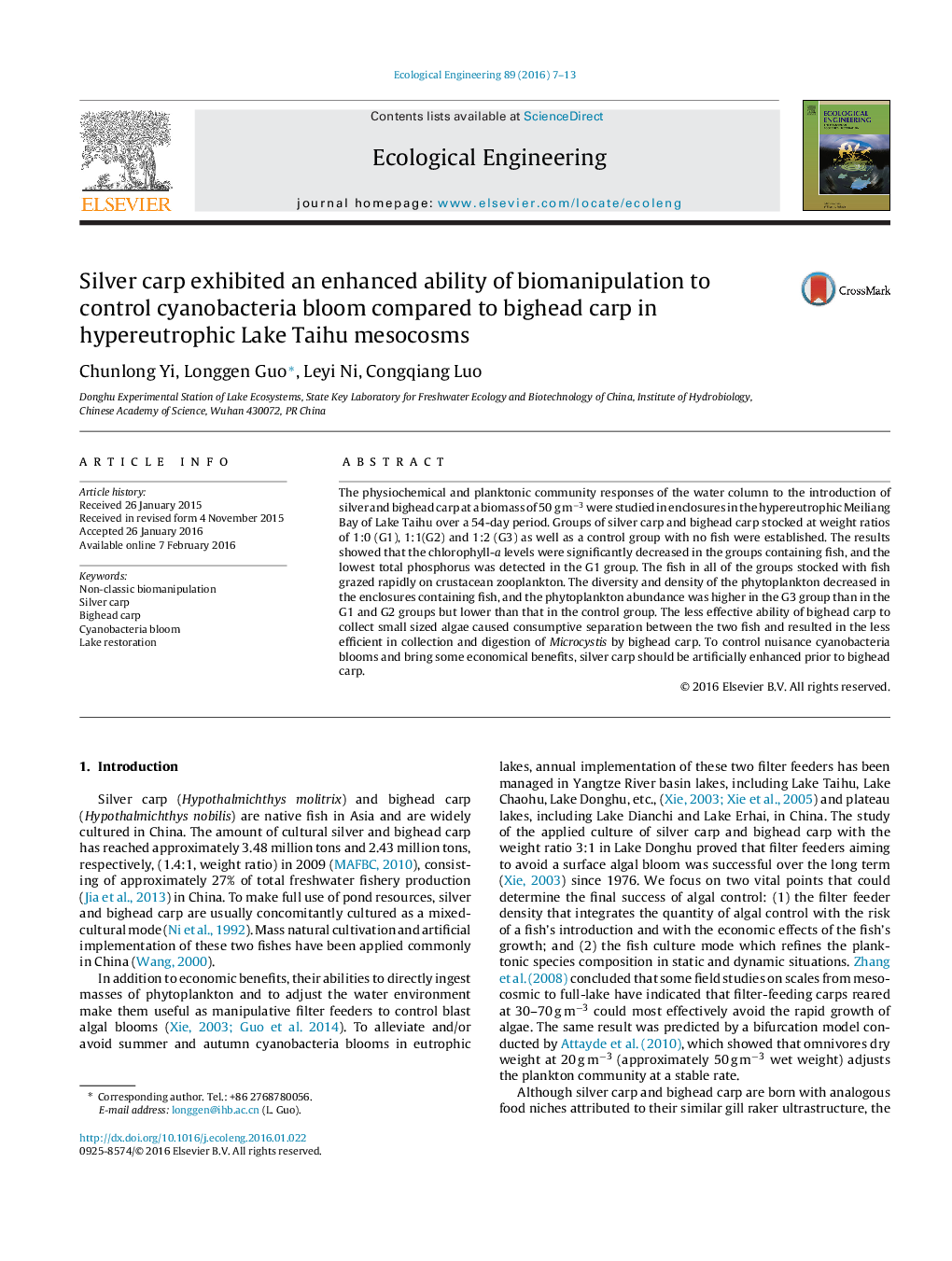| Article ID | Journal | Published Year | Pages | File Type |
|---|---|---|---|---|
| 4388741 | Ecological Engineering | 2016 | 7 Pages |
The physiochemical and planktonic community responses of the water column to the introduction of silver and bighead carp at a biomass of 50 g m−3 were studied in enclosures in the hypereutrophic Meiliang Bay of Lake Taihu over a 54-day period. Groups of silver carp and bighead carp stocked at weight ratios of 1:0 (G1), 1:1(G2) and 1:2 (G3) as well as a control group with no fish were established. The results showed that the chlorophyll-a levels were significantly decreased in the groups containing fish, and the lowest total phosphorus was detected in the G1 group. The fish in all of the groups stocked with fish grazed rapidly on crustacean zooplankton. The diversity and density of the phytoplankton decreased in the enclosures containing fish, and the phytoplankton abundance was higher in the G3 group than in the G1 and G2 groups but lower than that in the control group. The less effective ability of bighead carp to collect small sized algae caused consumptive separation between the two fish and resulted in the less efficient in collection and digestion of Microcystis by bighead carp. To control nuisance cyanobacteria blooms and bring some economical benefits, silver carp should be artificially enhanced prior to bighead carp.
